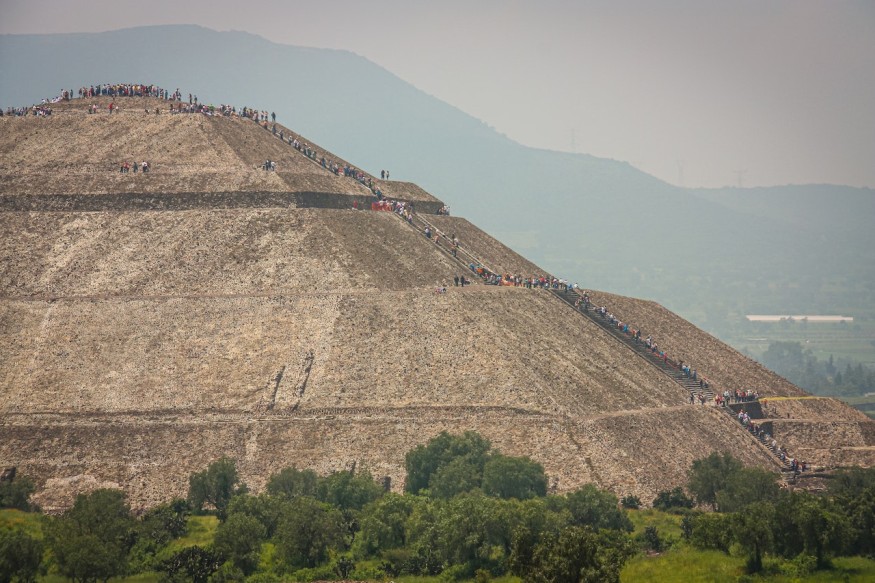
A research team was able to uncover the remains of a spider monkey among ruins in Teotihuacán, Mexico. The findings suggest that this was early evidence regarding translocation, gift diplomacy, and primate captivity among the Mayans and elite Teotihuacáns.
Ancient Sociopolitical Connections Between the Mayans and the Teotihuacáns
SciTechDaily reports that discovering the complete remains of the spider monkey's skeleton serves as fresh evidence regarding the political and social connections shared by the Mayan and Teotihuacán ancient civilizations.
These findings were generated by Nawa Sugiyama, anthropological archaeologist from the University of California, and an anthropologist and archaeologist team who have been conducting excavations on the Plaza of Columns Complex in Teotihuacán since 2015. Other animal remnants, thousands of mural fragments that mirrored the style of the Mayans, and 14,000 shreds of ceramic were also found. Such pieces date back over 1,700 years. Their study was included in the PNAS publication.
The remnants of the spider monkey, specifically, are considered the earliest evidence regarding gift diplomacy, primate captivity, and translocation among the Mayans and the Teotihuacáns. The findings debunk existing notions regarding how the presence of Mayans among the Teotihuacáns was restricted to communities of migrants.
The University of California notes how Sugiyama expressed how Teotihuacán lured individuals from different places. Teotihuacán was an area where individuals gathered to exchange ideas, property, and goods. The discovery of the spider monkey enabled the researchers to find out the shared connections between the two civilizations.
Spider Monkey Skeletal Remains
To learn more about the spider monkey, the researchers used an archaeometric approach that is multimethod (isotopes, zooarchaeology, ancient DNA, radiocarbon dating, paleobotany). The University of California reports that the animal may have been five to eight years old when it died.
The animals' skeletal remains were discovered alongside many rattlesnakes as well as a golden eagle. These were also engulfed by distinct artifacts, such as figurines of finge greenstones and snail/shell artifacts. All of these align with the evidence regarding the live sacrifice of certain animals during state rituals.
After examining the upper and lower canines, the researchers found that the bones were indicative of a spider monkey that fed on chili peppers, maize, and other foods. The monkey's bone chemistry, which sheds light on its environment and diet, shows that the animal went through two or more years of captivity. Before it arrived in Teotihuacán, the animal lived in an environment that was humid and fed on roots and plants.
Other than uncovering clues about history, the findings also enable the remaking of wider narratives. It helps specialists know more about how these advanced and strong civilizations handled political and social stressors that resemble the present-day situation. Sugiyama notes how the findings help them know more about diplomacy and the development and failure of urbanism.
Teotihuacán boasted of its success for more than 500 years. Hence, knowing the civilization's strengths and weaknesses may be helpful for present-day societies.
The pre-Hispanic city of Teotihuacán is considered a World Heritage Site by UNESCO. Over three million individuals visit it annually.
RELATED ARTICLE : How Ancient People Collected, Recycled, and Retained Appearance of Predecessors' Stone Tools Dubbed 'Memory Objects'
Check out more news and information on Archaeology in Science Times.
© 2026 ScienceTimes.com All rights reserved. Do not reproduce without permission. The window to the world of Science Times.











